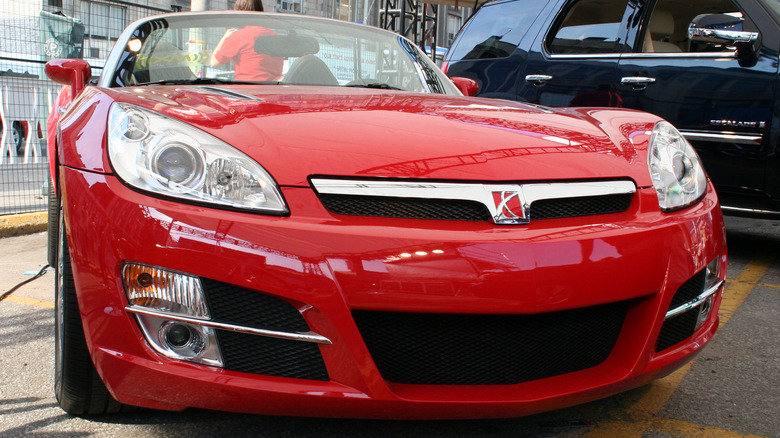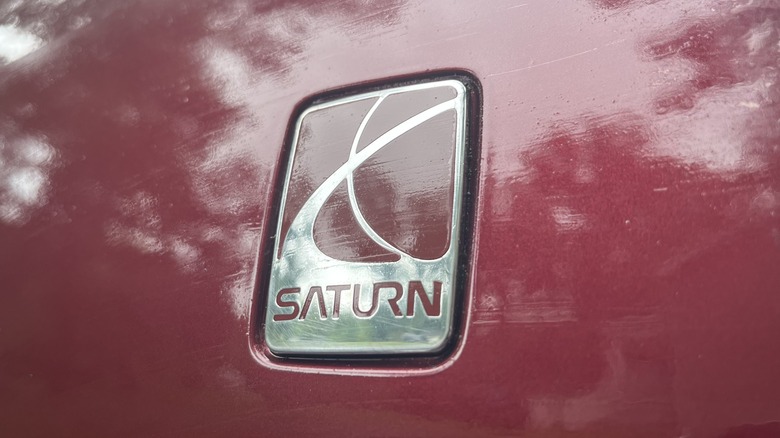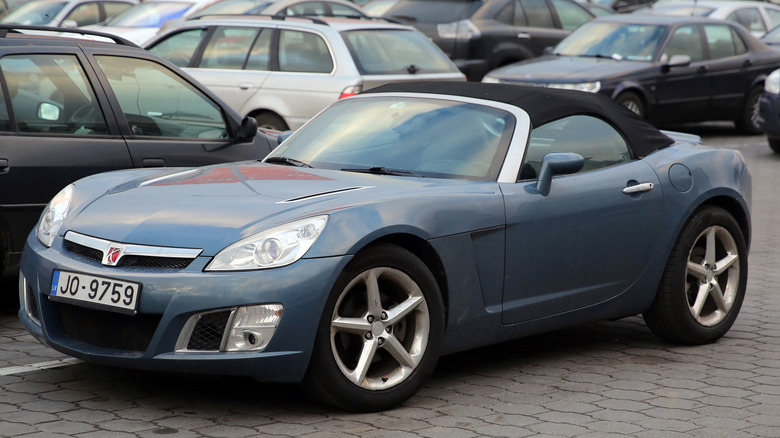The Real Reason Saturn Flopped
The first decade of the 2000s saw many American automakers meet their demise. First was Plymouth in 2001, followed by Oldsmobile in 2004, then Saturn and Pontiac were both axed on Halloween in 2010, and finally, Mercury was dissolved in 2011.
By the time they went to the big car dealership in the sky, most of the aforementioned brands were just tired husks of a lineup. Few had anything interesting to offer to car buyers. Saturn, however, stands out in that list. At only 25 years old, the brand was the youngest among those axed and was actually founded as an attempt to innovate and freshen up General Motors. For comparison, Oldsmobile was founded way back in 1897 and Chrysler's Plymouth first came around in 1928. It's easy to see why those brands were getting long in the tooth.
Saturn is a sad story amongst the defunct automakers. The brand was optimistic and tried its best to be different in a sea of mundanity. Unfortunately, a combination of bad business decisions, poor timing, and a good old-fashioned recession put Saturn in the grave way earlier than some expected.
A different kind of car company
In 1985, brands like Honda and Toyota were eating American brands for breakfast with inexpensive and efficient compacts. It was around this time that models like the Honda Civic and Toyota Camry started showing up in driveways across the United States. Saturn was made to combat that tide, with the first models rolling off the line in 1990. You can see now that the valiant effort was unsuccessful.
Saturn set itself apart from other automakers in a few key ways. Not least of which was Saturn's use of plastics in car construction. Plastics have always been used in automotive production, but mostly on interior parts and some exterior styling components. However, Saturn used plastic to make entire body panels. After all, plastic is easier to care for than metal, is surprisingly durable, and is rust-proof.
Unlike its cousin Pontiac, Saturn didn't initially borrow most mechanical components from other GM brands. For the most part, the first several Saturn cars were entirely original models. The Saturn brand mostly acted as a different entity separate from General Motors. Saturn even used a "no haggle" pricing model, years before brands like Tesla would try.
Saturn didn't make any supercars or track monsters and it didn't need to. The brand's bread and butter were simple inexpensive cars like the S-Series and L-Series. The S-Series was a compact that could be configured in a sedan or wagon and featured its own in-house drivetrain. That's practically unheard of from sub-brands today.
The sun sets on Saturn
Saturns initially sold well with hundreds of thousands of cars leaving the factory in the first decade of the brand (per Car and Driver). While innovative in the late 1980s and early 1990s, the lineup was starting to show its age and didn't offer any real competitive models to differentiate itself from other brands. The brand even started borrowing platforms from GM, such as with the Relay minivan, in an effort to diversify the lineup. Saturn didn't know it at the time, but the writing was already on the wall.
Saturn eventually jumped on the crossover craze for the 2002 model year and started producing the Saturn Vue. Some Vues had the odd distinction of being equipped with a 3.5L Honda engine, similar to the one found in the Odyssey minivan. Saturn even attempted to wow the sportscar crowd with the Saturn Sky roadster. Despite being a rebadged Pontiac Solstice, the Sky was liked by reviewers. It was cheap, fast, and fun to drive.
At the end of its life, the Saturn lineup was looking sad. What were once entirely unique models were now rebadged Chevys and Pontiacs (via Edmunds). It went from a brand that tried to be different to essentially the generic store brand versions of other GM models.
By the time the disastrous 2008 recession rolled around and the government started giving bailouts to automakers, Saturn was one of the first extraneous GM brands to go. GM made the decision to shutter Saturn in 2009, and by October of 2010, after a failed sale to Penske, Saturn was gone for good.


